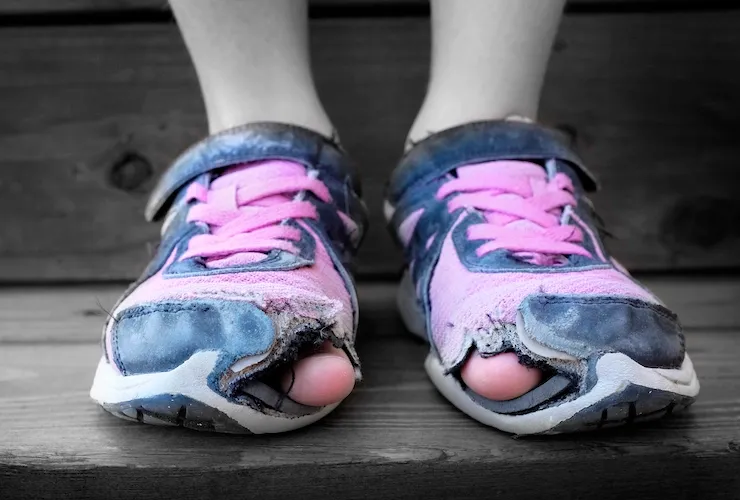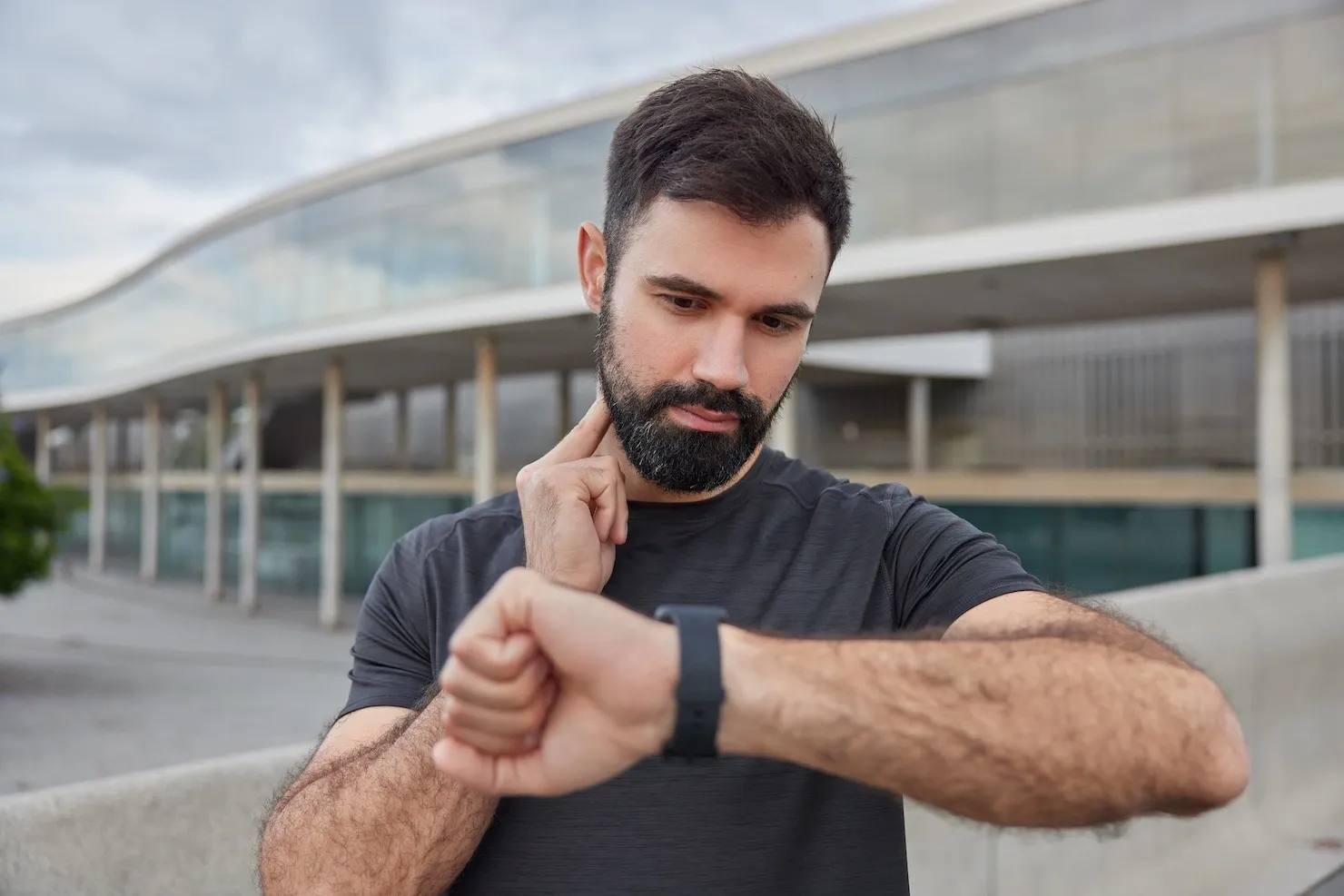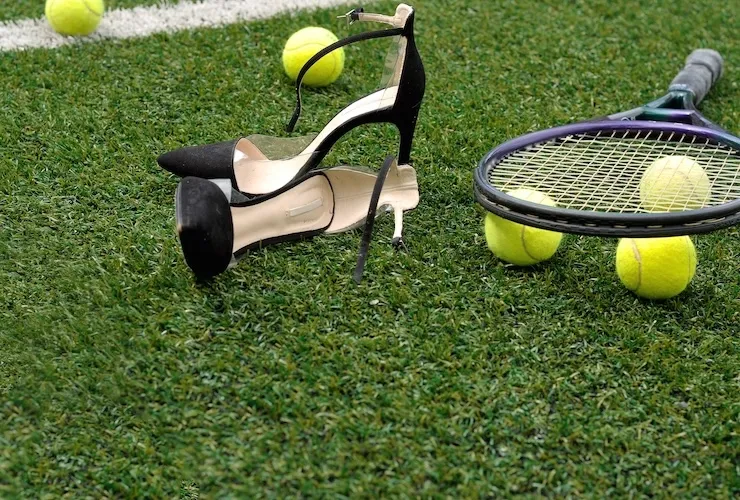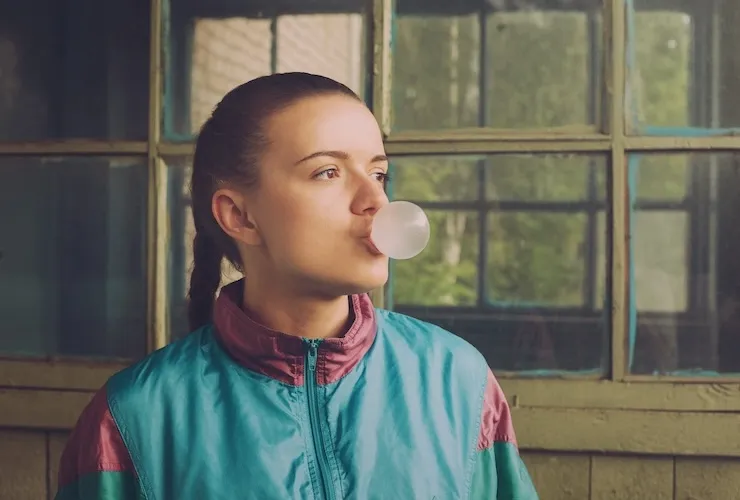Properly fitting your running shoes is absolutely crucial. When you're hitting the pavement, your shoes become an extension of your feet – an integral part of your stride, performance, and even well-being. It's not just about style or brand loyalty; it's about ensuring an injury- and pain-free experience.
What Can Happen with a Poor-Fitting Shoe?
Wearing a running shoe that fits poorly sets the stage for a whole array of foot problems:
- chafing
- blisters
- black toenails
- tingly toes
- plantar fasciitis.
When squeezing your feet into a too-tight pair – blisters become your uninvited companions, making every step a struggle. But going a size up isn't the escape route. Too-loose shoes make your heel slide, causing chafing.
Have you seen the dark toenails in the ultra-marathon finishers? Often, a poor fit causes them, leaving runners with a horror story to tell. Moreover, plantar fasciitis, tingly toes, numbness, and pain can become your running partners, robbing you of the joy of every stride.
How Should Running Shoes Fit & Feel? 5 Crucial Points
Let's review the vital factors that define how the perfect pair of running shoes should feel on your feet and when jogging.
#1 Shoe length: Should you size up in running shoes?
When experiencing prolonged bounce on a long run or distance race, our feet typically extend by 4-8mm in length. No worries; they will return to normal very soon. However, to compensate for the length gain, you should go half-size or even whole size up, compared to your ordinary footwear. It'll prevent the associated discomfort and pain during a run.
Strive for the golden zone between snug and spacious. You should have about a half to one inch, equivalent to your thumb's width, of space between the end of your longest toe and the shoe's tip. See the self-test on the image below.
#2 Proper width: Should running shoes be tight?
The shoe's inside volume should correspond to your foot width – not too snug nor too spacious. For a self-test, take a look at the eyelets. In a proper-width running shoe, you can slip from two to three fingers between them. Four fingers? Try a wider model. Just one? Check running shoes for narrow feet.
#3 Wiggle room in toe box: Should running shoes be bigger?
The toe box should be roomy, and the upper shouldn't restrict your toes' natural movement. If your toes feel cramped and you can barely move them, explore a wider size. Otherwise, those sneakers aren't designed for your unique foot form or for running overall.
#4 Snug fit in midfoot: How tight should running shoes be?
Like a firm handshake, your midfoot must be snug but without a squeeze. Not too tight, not too loose. If you're feeling some hot spots during your runs, it's time to reassess that midfoot lacing. A little movement is good, but not so much that you're getting friction.
#5 Secure heel lockdown: How to fix the heel?
A heel that slips and slides is a recipe for discomfort, chaffing, and ultimately blisters. Many simple techniques can prevent excessive heel movement, for instance, wearing thick socks or lacing a runner's knot. If they don't help, try different running shoes with slimmer heel parts.
Four Tips to Fit the Running Shoes Properly
1. Your foot is longer by the end of the day
Just as the sun sets and rises, your feet experience swell. Try on new running shoes at the end of the day when your feet have reached full volume and extension – this is your Cinderella moment.
2. Buying offline? Bring your running socks with you
Usually, buyers use disposable socks when trying footwear in a store. However, with running shoes, put on the socks you'll be running in, as they influence the whole fit. Typically, staff is okay with it as long as they are clean.
3. Buying online? Order two pairs instead of one
It isn't easy to get a proper size and fit from behind the screen based solely on ratings, reviews, and size charts. Most shoes are true-to-size; however, there might be a discrepancy between your feet and the average one.
Order two pairs to avoid online shopping adventures: your usual size and a half size up. So, you have a higher chance of winning in a shoe-fitting roulette. Although, check the return policy upfront.
4. Track the shoes' mileage and replace them on time
The average lifespan of a running shoe is 400 to 600 miles. However, the more cushioned and lightweight the shoe is, the faster it loses plush sensation and proper fit.
Tracking shoe mileage with a calendar or by its look and feel can be challenging and misleading. I monitor how many miles I ran in a shoe with Strava. It's convenient, free, and easy to use, and it notifies you when it's time to say goodbye and shop for a new pair.
{IMAGE}
Five Most Common Shoe Fit Issues and Troubleshooting
Let's dive into common fit issues that can arise regarding running shoe fit and how to tackle them effectively.
#1 Blisters on toes
Blisters often form on the sides or tops of your toes due to friction. Consider using special socks with separate pockets for each toe. The socks separate your toes, reducing rubbing and preventing blisters.
#2 Toe bang and black toenail
It's called a toe bang when your toes continuously hit the front of your shoe while running. Continuously hitting the toe while running causes black toenails and even separation of the nail from its nail bed. Ensure you have sufficient room between the end of your longest toe and the shoe's front. You can also try the marathon loop lacing. This method secures your heel, preventing it from sliding forward and causing a toe bang.
#3 Heel slippage and blisters
Heel slippage and blisters can result from a loose fit around the heel area. Your heel is mostly vulnerable while breaking in new shoes. The runner's loop lacing can effectively lock down your heel, minimizing movements. In case of excess volume, the extra-thick padded socks can take it up, creating a snugger fit.
#4 High arch and top foot discomfort
Individuals with extra high arches might experience discomfort in the arch or top part of the foot. If you lack space in the shoe, try window lacing. It's a technique that skips certain eyelets to create an additional space for the foot's high points. So you get a more comfortable fit without sacrificing support.
#5 Bunions and discomfort
Bunions can lead to discomfort, especially around the big toe area. You might notice wear patterns on your shoes corresponding to these sensitive spots. To tackle this, opt for running shoes with a wider toe box. The additional space accommodates bunions and reduces friction. Thin socks can also help minimize irritation.
Closing Thoughts
Running isn't easy; your shoes shouldn't add difficulties on top of it. Choose your running shoes carefully and find the fit that makes you forget they're even there. So your focus remains on the finish line, not your feet's discomfort.



